1. Design method of plate heat exchanger average temperature difference method
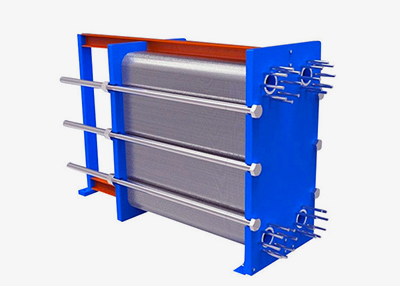
A lot of people don't know how to calculate the average temperature difference of a plate heat exchanger, so here's a little explanation!
1, Calculate the unknown temperature or flow rate, and also the heat load through the heat balance equation.
2, choose the appropriate plate type, according to the size of the heat transfer and flow rate.
The selection of plate type should be based on the specific working conditions. When the flow rate is large and the pressure drop is low, the plate type with small resistance should be used; on the other hand, the plate type with slightly larger resistance coefficient can be used.
3, Estimate the heat transfer area, according to the heat transfer calculation of the approximate heat transfer area.
4, the selection process and the number of channels, the initial selection of cold, hot fluid flow and the number of channels, and thus calculated flow rate.
5, seek the average temperature difference.
6, for convective heat transfer coefficient and total heat transfer coefficient, the first to find out the cold, hot fluid, respectively, convective heat transfer coefficient, so as to calculate the total heat transfer coefficient.
7, calculate the necessary heat transfer area.
8, back to the accounting of heat transfer area.
9, test pressure drop, allow the pressure drop often becomes a plate heat exchanger design constraints. The efficient design is always required to allow enough pressure drop, if no matter how to change the process layout can not coordinate the heat transfer load, flow and If the relationship between the allowable pressure drop and the design is not satisfactory, an inefficient design solution can only be achieved. If a satisfactory design solution is not achieved throughout the design, a change of plate type may be considered.
2. Does heating plate heat exchangers really need to be cleaned once a year?
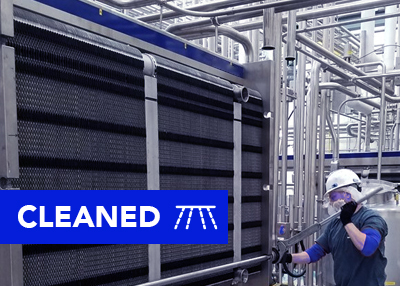 have you found such a phenomenon, a fast heating in November, each began to look around for cleaning floor heating master, in everyone's impression, after cleaning heating home will be very warm, what is this principle?Actually this and heating heat exchanger used in heat exchanger station has a lot to do, because each floor heating temperature is stood out from the heating heat temperature spread outward, the temperature of the heating heat exchanger station generally need to reach 60-70 degrees, if the source temperature to reach, I do not need to dredge the heating pipe every year, really not necessary.Surface gloss, adhesion and scaling, conduction velocity
have you found such a phenomenon, a fast heating in November, each began to look around for cleaning floor heating master, in everyone's impression, after cleaning heating home will be very warm, what is this principle?Actually this and heating heat exchanger used in heat exchanger station has a lot to do, because each floor heating temperature is stood out from the heating heat temperature spread outward, the temperature of the heating heat exchanger station generally need to reach 60-70 degrees, if the source temperature to reach, I do not need to dredge the heating pipe every year, really not necessary.Surface gloss, adhesion and scaling, conduction velocity
In central heating system, heating heat exchanger station mostly choose to use a plate heat exchanger, circulating water is mainly because network for water and deep well water, hardness is larger, and the computer in the water the water temperature will produce sediment, sediment easily formed in the hot side of the scale or the circulation water suspension, which is deposited on surface of heat exchanger, the formation of secondary scale, and cause clogging fouling in heat exchanger, reasonable selection, increase the resistance of the fluid flow equipment, recovery efficiency is bigger and bigger, and consume more pump power, the cost of unnecessary waste,The plate-type heat exchanger occupies a small area. According to the actual operation of the heating and heat exchange station, the material is made of stainless steel plates with wide flow channel and deep slot, so as to extend the length of the flow channel and improve the heat exchange efficiency.
Is simple, of course, behind the actual case data support, rui put for the west coast of Qingdao above central heating project solution, actively responded to an appeal by the state environmental protection energy conservation, waste heat recovery design into the solution, 20 normal operation of heat exchanger for ten consecutive years, a new production line just on the choice of the good heat exchanger manufacturers, need a year a cleaning? No, it saves a lot of running costs.
3. What causes a plate heat exchanger to leak?
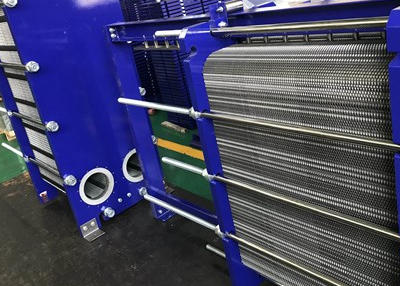 The plate heat exchanger will encounter many conditions when you use it, so what should you do when you encounter a leaking plate cooler? What about the solution? The following small compilation to explain to you.
The plate heat exchanger will encounter many conditions when you use it, so what should you do when you encounter a leaking plate cooler? What about the solution? The following small compilation to explain to you.
1, scale too much: in addition to water quality components, if the plate oil cooler core accumulates a large amount of scale, will make its water flow speed slow and water temperature rise, thus leading to the phenomenon of dezincification of brass will also add according to the above factors, causing the precipitation of free 00I, strongly influenced the dezincification process.
2, cooling water quality is not good: in some areas of the use of hard water as engine cooling water, with H62 brass material made of plate type oil, the oil is not good. The cooler core, which is easily damaged by corrosion, is the result of dezincification by yellow actinides, which results in a gradual reduction of the zinc content in the surface layer of the copper-zinc alloy. This is due to the dezincification produced by the yellow actinides, which causes the zinc content of the surface layer of the copper-zinc alloy to gradually decrease under certain conditions, resulting in porosity and corrosion. brittle copper layer. During the intense dezincification process, porosity is created in individual parts of the core. The dezincification becomes more pronounced as the bicarbonate content in the cooling water increases. At the same time, the hardness of the water and the chloride of the water string, also have a greater relationship with this phenomenon.
3, cylinder gas: in the plate oil cooler, from the cylinder pad into the exhaust gas in the waterway, because it contains carbon dioxide and sulfide. Therefore, the corrosive effect on the cooler core is also high. The exhaust gases in the cylinder escape in the event of a burst, when, due to the high pressure, even if the cylinder gasket is not visibly defective, the exhaust gases are It can also escape into the cooling system. This phenomenon, for the use of lower octane gasoline, easy to produce a sudden burst of gasoline engine is difficult to avoid.
The above is the editor for you to explain the causes of plate cooler leakage, I hope it can help you, if you have other aspects you want to know, you can consult us.
4. Have you chosen the right food grade plate heat exchanger manufacturer?
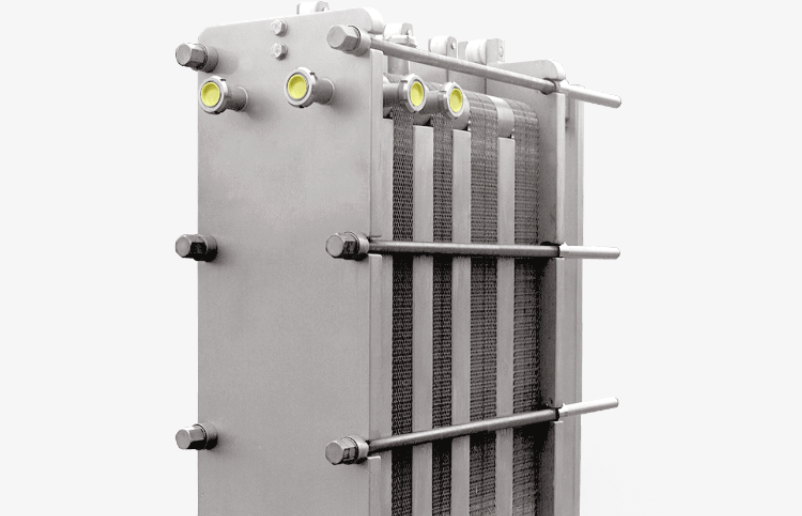 The world is changing rapidly, and global food consumption patterns are also changing.
The world is changing rapidly, and global food consumption patterns are also changing.
In 2050, the global population will reach 9.6 billion, so the food industry will play an unprecedentedly important role.
Obviously, this is an excellent time for companies that can meet the changing eating habits and tastes of the future population.
Innovative food is also one of the key factors driving the income growth of food companies in the next three years.
Food-grade plate heat exchangers support sanitary and efficient production of various products.
These equipments can cope with the difficult problems of complex ingredients and processing techniques with special processing requirements.
Heating, sterilization, and cooling are the most basic production processes in the food processing process. Food-grade plate heat exchangers are inevitably used. They are also food-grade plate heat exchanger manufacturers, but the quality of the production equipment is indeed different.
Here are some tips for you to choose a plate heat exchanger, so that you can buy a better quality plate heat exchanger.
Kanban sheet raw materials: because it is processed for food, it is ultimately the food to be imported, so the materials used must meet the sanitary standard, all stainless steel is used, but the stainless steel material is also graded, the composition and content of trace elements in stainless steel,
It can ultimately lead to the length of the service life of the entire equipment and subsequent operating costs, so you must pay attention to the quality of stainless steel raw materials when purchasing heat exchangers.
Look at the quality of the rubber strips: the rubber strips play a sealing role in the entire heat exchange process, so the medium will definitely come into contact with the rubber strips during operation, especially for the heat exchange of food. The hygienic standards of the rubber strips are higher.
When using heat exchangers for food, be sure to ask about the procurement channels of the raw materials of the rubber strips. The quality of the raw materials determines the quality of the rubber compound. If the quality of the raw materials does not meet the standard, the produced rubber strips cannot meet the sanitary standard.
5. Installation, use and maintenance of plate heat exchanger
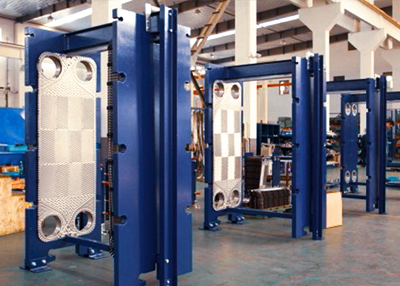 Now the application of plate heat exchanger has been very extensive, for the installation of plate heat exchanger, the use and maintenance of industry experienced engineers to summarize for you.
Now the application of plate heat exchanger has been very extensive, for the installation of plate heat exchanger, the use and maintenance of industry experienced engineers to summarize for you.
Installation
1 When lifting, please keep the equipment level to prevent the rope from slipping.
2 Before installation, please check whether the pipeline design is reasonable, whether it can be installed according to the label, and whether the diameter of the pipeline flange matches the interface of plate heat exchanger. If the diameter difference is too large, it will affect the exchange effect. The plate heat exchanger will be damaged.
Operation
1 Check that all connections are tight. Make sure that the system parameters do not exceed the working pressure and temperature values allowed on the manufacturing label. When the above conditions are met, the heat exchanger can be started.
2 Start the heat exchanger
Before starting the pump, open all valves and drain valves of the heat exchanger, then close the inlet valve of the heat exchanger. After starting the pump, slowly open the pump outlet valve to gradually increase the pressure. To prevent unidirectional overpressurization, open the inlet valves for both fluids entering the heat exchanger at the same time, or slowly fill the low-pressure side first, then the low-pressure side. Ground the fluid on the high pressure side. After emptying the heat exchanger of gas, close the bleed valve. If the plate heat exchanger has not been used for more than six months, the water pressure should be tested before use. Usually, clean water is used to test the pressure at 1.3 times the design pressure, and the heat and cold should be kept under pressure for 30 minutes without leakage before it is considered qualified.
3 Heat exchanger operation
The operating parameters may not be changed while the heat exchanger is operating. Do not exceed the maximum allowable values listed on the manufacturing label. To ensure proper temperature or pressure drop, make any adjustments to the fan slowly to avoid affecting the system.
4 When closing, close the high temperature and high pressure fluid valve first, then close the low temperature and low pressure fluid valve.
Equipment maintenance
After a period of operation, the plate heat exchanger (different media, different time) deposits on the surface of the plate due to particles in the fluid, increasing the thermal resistance and leading to a decrease in heat transfer efficiency, which should be regularly maintained by the maintenance staff according to the operating conditions. If the fluid is more prone to fouling, a corresponding cleaning system should be installed on the piping during installation. At the end of the job, drain the original fluid from the machine and then turn on the cleaning system to clean it. This can effectively extend the normal use time of the plate heat exchanger.
 Send Email
Send Email